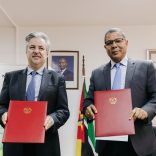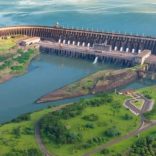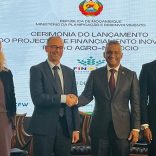Graça Machel advocates greater participation of Mozambican women in clean energy
Sub-Saharan Africa could green-light 74 mil mt/year LNG capacity by 2030: ACTING

Photo: Jornal Notícias
- New project approvals depend on market conditions: ACTING
- Region expected to have 60 million mt/year capacity by 2025
- Sub-Saharan gas-to-power capacity seen rising 55% by 2025
Sub-Saharan Africa could approve an additional 74 million mt/year of LNG export capacity by 2030 if market conditions allow, the African Coalition for Trade and Investment in Natural Gas said in report published Feb. 9.
That would be in addition to the total 60 million mt/year of export capacity the region is expected to have by 2025, ACTING — launched Feb. 3 by the African Energy Chamber and investment research company Hawilti — said in its inaugural report.
ACTING said sub-Saharan Africa had significant potential to expand its LNG export capacity and to grow its own gas consumption, particularly through gas-to-power projects.
“Natural gas has the potential to be a true enabler of economic recovery post-COVID and to support Africa’s energy transition,” Nj Ayuk, executive chairman at the African Energy Chamber, said.
Sub-Saharan Africa remains a limited gas producer despite its abundant reserves and has not yet fully benefited from its own gas resources, ACTING said.
Sub-Saharan Africa currently has 33.8 million mt/year of LNG export capacity across four countries — Angola, Cameroon, Equatorial Guinea and Nigeria.
In addition, a further 26 million mt/year of export capacity is under construction — Nigeria LNG’s seventh train, BP’s floating LNG production project in Mauritania/Senegal, and two new export facilities in Mozambique (the Total-operated Mozambique LNG project and Eni’s Coral FLNG).
“By 2025, sub-Saharan Africa will house four onshore LNG terminals and three FLNG units, able to export 60 million mt/year of LNG,” ACTING said.
Further expansion
ACTING said another round of sub-Saharan LNG export capacity approvals could take place by 2030, green-lighting another 74 million mt/year of export capacity, but that it would be very much dependent on market conditions.
“The quantities of gas found offshore Mauritania, Senegal and Mozambique are such that they could justify over 90 million mt/year of LNG export capacity combined, more than Qatar,” it said.
Qatar, which has an LNG export capacity of 77 million mt/year, on Feb. 8 took the final investment decision on its North Field expansion project, which will see capacity grow to 110 million mt/year.
It also has plans to increase it further to 126 million mt/year and beyond.
ACTING said the 15.2 million mt/year Rovuma LNG export project in Mozambique was “likely to get FID in the near future” but cautioned about further growth.
“Anything beyond that is very uncertain, at best,” it said. “Simply put, the outlook for future sub-Saharan African LNG export projects is unclear.”
In the medium and long term, market conditions could affect the approval of a number of projects, it said.
These include the further development of BP’s Mauritania/Senegal project in subsequent phases, originally designed to bring total capacity to 10 million mt/year.
Other projects that could account for some of the additional 74 million mt/year of new capacity are Senegal’s 10 million mt/year Yakaar-Teranga LNG hub, Mauritania’s 10 million mt/year Bir Allah-Orca LNG hub, and the expansion of Total’s Mozambique LNG facility to 42 million mt/year.
“Such projects now depend on their developers’ ability to optimize cost and find new synergies, especially when it comes to brownfield expansion plans,” ACTING said.
Gas-to-power
According to ACTING, Africa is set to see significant growth in gas consumption as it “plays catch up” with the rest of the world.
Sub-Saharan Africa, it said, has exploited only 5% of its total identified gas-to-power potential of 400 GW.
But that is set to change. “Based on under-construction projects, pre-FID projects and existing thermal plants planned to be converted, we estimate that installed and grid-connected gas-to-power capacities could increase by 55% in sub-Saharan Africa by 2025 and reach approximately 28 GW,” ACTING said.
New gas-to-power markets will be established in Senegal and South Africa, while growth is expected in the Democratic Republic of Congo, Botswana and Namibia.
Gas-to-power projects can also be facilitated through LNG imports, with Ghana, South Africa and Benin all expected to start importing LNG before the end of the decade.
Ghana should begin receiving LNG next month after its floating import terminal was delivered in January.
South Africa, where LNG import plans date back several years, could be finally moving forward with the construction of a first LNG import and regasification terminal, ACTING said.
“While the Department of Energy is advancing Coega as the location of at least one terminal, state-owned conglomerate Transnet seems to me moving forward in other places,” it said.
In July 2019, it signed a cost-sharing agreement with the International Finance Corporation, a member of the World Bank Group, to conclude a feasibility study for the development of an LNG storage and regasification terminal at Richards Bay and the re-purposing of its pipelines for gas transmission to inland markets.












Leave a Reply
Be the First to Comment!
You must be logged in to post a comment.
You must be logged in to post a comment.